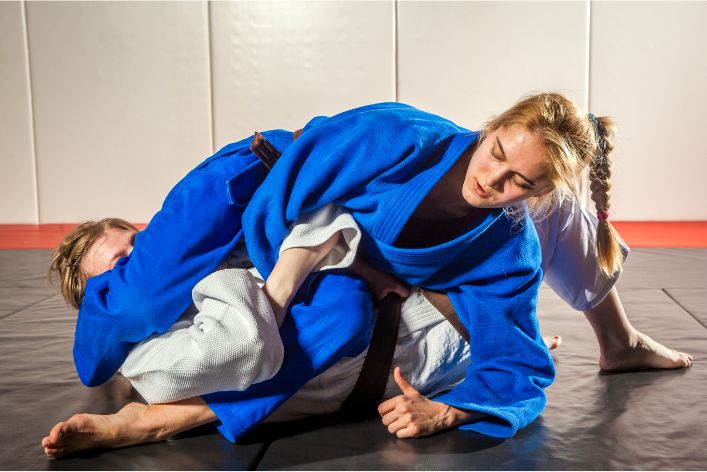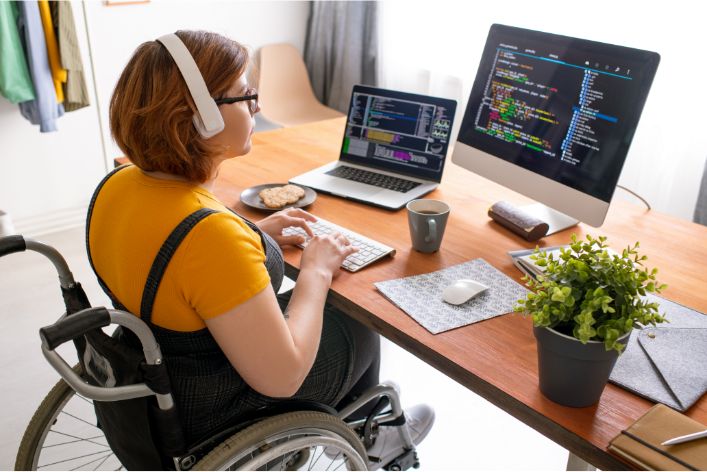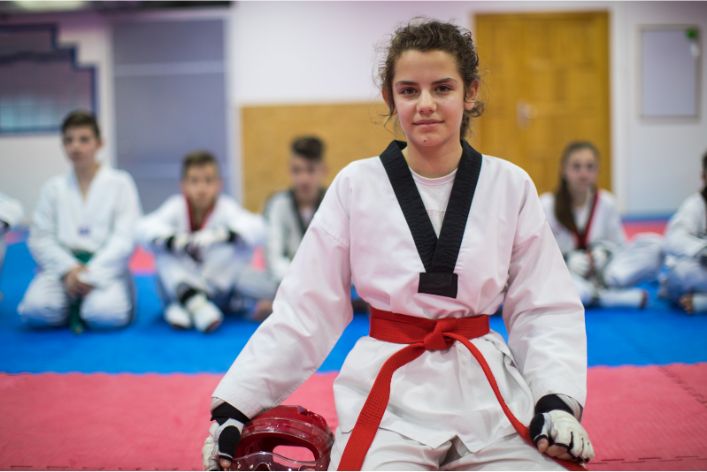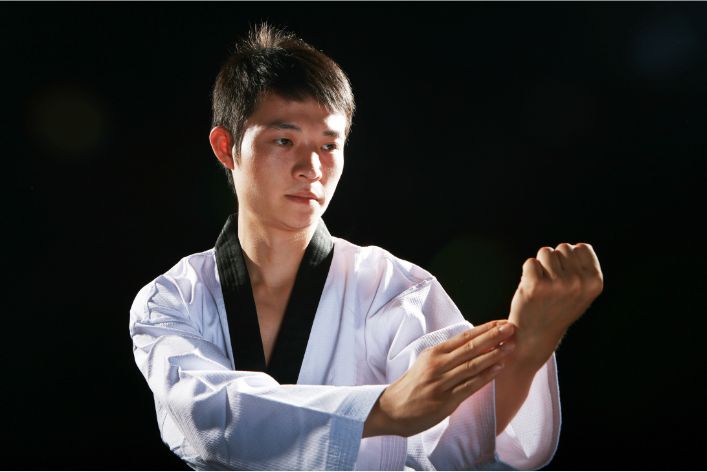Last Updated on May 28, 2023
Jiu Jitsu is a martial art that has gained immense popularity in recent times. Originating from Brazil, it has a unique approach to self-defense, which focuses on grappling and ground fighting techniques. This guide offers beginners a smooth path to get started with Jiu Jitsu.
With the help of this guide, a Jiu Jitsu beginner can learn the basics, build a strong foundation, and develop their skills to become an expert in this martial art. Whether you’re looking at it as a new hobby or serious martial art, getting started with Jiu Jitsu can be intimidating, but this guide can ease the process and get you on the right track.

Understanding Jiu Jitsu
1. History of Jiu Jitsu
Jiu Jitsu originated in Japan in the late 1800s as a form of combat used by the Samurai class. It was developed to be an effective way to defend oneself without using a weapon in close combat situations. Over time, Jiu Jitsu evolved into different styles as it was introduced to different parts of the world.
2. Definition and Benefits of Jiu Jitsu
Jiu Jitsu is a martial art that focuses on grappling and ground fighting techniques. It emphasizes the use of leverage and technique over brute strength. Jiu Jitsu can provide a range of physical and mental benefits:
- Improved flexibility and endurance
- Better balance and coordination
- Increased strength and muscle tone
- Stress relief and improved mental health
- Self-defense skills
3. Different Types of Jiu Jitsu Styles
There are several styles of Jiu Jitsu, each with their own emphasis and techniques:
- Brazilian Jiu Jitsu (BJJ) – This style focuses on ground fighting and submission techniques. It is known for its effectiveness in defeating larger opponents and has become a popular martial art for self-defense and sport.
- Japanese Jiu Jitsu – This style incorporates strikes, throws, joint locks, and grappling techniques. It also emphasizes the use of weapons such as knives and sticks.
- Judo – This Olympic sport and martial art emphasizes throwing and grappling techniques. It is known for its rigorous training and competitive aspects.
- Sambo – This grappling style originated in Russia and combines elements of Judo and wrestling. It is known for its effectiveness in self-defense and competition.
- Submission Wrestling – This style combines techniques from Brazilian Jiu Jitsu, Judo, and wrestling. It is known for its focus on submission holds and ground fighting skills.
Before starting to train in Jiu Jitsu, it’s important to research and choose a style that aligns with your goals and interests. Each style may also have different training methods and techniques, so consider attending a trial class or speaking with the instructor before committing to a program.
Read: Sumo Wrestling’s Impact on Japanese Culture
Gears and Pieces of Equipment for Jiu Jitsu
Jiu Jitsu requires certain gears and equipment to ensure safety and maximize performance. Here are some of the essential gears that every Jiu Jitsu beginner should know:
1. Gi
A Gi is a uniform worn during Jiu Jitsu training and competitions. It consists of a jacket, pants, and a belt. The jacket is made of durable cotton or canvas material and features a thick collar, while the pants are made of tapered cotton or ripstop fabric.
When choosing a Gi, make sure to consider the fit and material. It should fit comfortably and allow for a full range of motion. Also, make sure it’s made of high-quality material that can withstand wear and tear. The standard colors for a Gi are white, blue, and black, but some schools may allow other colors.
Some well-known Gi brands for beginners include Tatami, Fuji, and 93 Brand.
2. Belt
The belt indicates a student’s rank in Jiu Jitsu. There are different colors that represent various ranks, and each belt has a stripe system that shows how close a student is to their next promotion.
When choosing a belt, make sure to get the right size for you. It should be long enough to tie but not too long that it drags on the ground. Some schools may require a specific brand or type of belt, so check with your instructor before purchasing.
3. Rash Guard
A rash guard is a tight-fitting shirt worn under the Gi. It’s made of moisture-wicking fabric that helps keep the body cool and dry during training. It also provides a layer of protection against skin infections and mat burns.
When choosing a rash guard, make sure it fits snugly and doesn’t restrict your movement. Look for materials that are comfortable and breathable, such as polyester-spandex blends. Some popular rash guard brands for beginners include Tatami, Hayabusa, and Scramble.
4. Mouthguard
A mouthguard protects teeth and gums from impacts during training or competitions. It can also help prevent concussions and other head injuries.
When choosing a mouthguard, make sure it fits securely and comfortably in your mouth. There are various types of mouthguards, including boil-and-bite and custom-fit. It’s best to consult with your dentist or sports medicine professional to determine the best option for you.
5. Knee Pads
Knee pads provide extra cushioning and support to the knees, which can help prevent injuries during training.
When choosing knee pads, make sure they fit snugly and aren’t too bulky or restricting. Look for knee pads made of flexible, breathable materials that allow for a full range of motion. Some popular knee pad brands for beginners include McDavid and Cliff Keen.
Overall, choosing the right gear and equipment is crucial for Jiu Jitsu success and safety. Take the time to research and invest in high-quality gear that fits well and is made of durable materials. Remember, the right gear can help you reach new levels in your training and ultimately achieve your Jiu Jitsu goals.
Finding a Jiu Jitsu Gym
Jiu Jitsu is a martial art that can offer tremendous benefits, both physically and mentally. Before starting your Jiu Jitsu journey, you need to find a gym that is right for you. Here are some tips to help you find the right Jiu Jitsu gym for you.
Do Your Research
The first step to finding a Jiu Jitsu gym is to research the ones in your area. Look up Jiu Jitsu gyms near you on search engines, social media, and directories. Read reviews and ratings from students who have trained at the gym. This will give you an idea of the quality of instruction, facilities, and atmosphere.
Consider the Instructor’s Credentials
The instructor’s credentials are critical when selecting a Jiu Jitsu gym. The instructor should have the proper certifications, experience, and knowledge to teach Jiu Jitsu effectively. Look for an instructor who has been certified by a reputable Jiu Jitsu organization. They should also have experience in teaching Jiu Jitsu at all levels, from beginners to advanced.
Check the Class Schedule
The class schedule is an essential factor to consider when choosing a Jiu Jitsu gym. You need to find a schedule that is convenient for you, so you can attend classes regularly. Look for a gym that offers classes at various times throughout the day, including evenings and weekends, to accommodate your busy schedule.
Look for a Positive Atmosphere
The Jiu Jitsu gym’s atmosphere is crucial to your overall experience. Look for a gym that promotes a positive and supportive environment. The gym should have a friendly atmosphere, with instructors and students who are willing to help each other. A gym that promotes a competitive or hostile environment may not be the right fit for you.
Reach Out and Schedule a Trial Class
Once you have narrowed down your options, it is time to reach out to the Jiu Jitsu gym to schedule a trial class. Make a phone call or send an email to the gym to inquire about their trial class options. Ask any questions you may have about the gym, including membership fees and policies. During your trial class, pay attention to the instructor’s teaching style and the gym’s atmosphere to see if it is the right fit for you.
In fact, finding the right Jiu Jitsu gym is essential to your success in the sport. Do your research, consider the instructor’s credentials, check the class schedule, and look for a positive atmosphere. Once you have found the right gym, schedule a trial class to see if it is the right fit for you. With a little effort and patience, you can find a Jiu Jitsu gym that will help you reach your fitness and martial arts goals.
Starting out with Jiu Jitsu
Describe what a typical Jiu Jitsu class looks like
A Jiu Jitsu class typically starts with warm-up exercises that involve stretching, cardio exercises, and body-weight workouts. The warm-up sessions help to prepare your body for the upcoming drills and sparring sessions.
After the warm-up session, the instructor will demonstrate a specific technique, and the students will practice it with a drilling partner. The students then switch partners after a few minutes to practice the technique several times. The class ends with sparring sessions where students apply the techniques learned in a controlled environment.
Explain how Jiu Jitsu skills are typically taught, including warm-up exercises, drilling techniques, and sparring
Jiu Jitsu skills are taught progressively, starting from basic stances, movement, and techniques. The instructor usually demonstrates and explains each technique with the help of an assistant. The students then pair up and start drilling techniques together, with the instructor moving around the room to monitor progress and provide feedback.
Drilling allows students to practice the techniques until they become second nature. Sparring sessions are then introduced to allow students to apply the techniques on a fully resisting opponent.
Offer tips on staying safe and avoiding injuries during training
- Always warm up properly before training.
- Use protective gear such as mouth guards, headgear, and shin guards.
- Tap out when you are caught in a submission hold to avoid injury.
- Avoid jerky movements that can lead to injuries.
- Listen to your body and take a break if you feel pain.
- Stay hydrated throughout the training session to prevent muscle cramps.
Starting out with Jiu Jitsu can be a bit intimidating, but with the right mindset and approach, you can quickly progress and become proficient. Remember that Rome wasn’t built in a day, and it takes time and dedication to master a technique.
Read: How to Train Like a Sumo Wrestler: Tips & Techniques
Progressing in Jiu Jitsu
Importance of setting realistic goals for Jiu Jitsu
Setting goals is important in Jiu Jitsu, as in any other sport. Goals give you something to work towards and help keep you motivated. However, it is important to set realistic goals that are achievable.
Setting a goal to become a black belt in one year, for example, is not realistic. Your goals should be challenging, but attainable. Setting unrealistic goals can lead to frustration and disappointment.
How to track progress and measure improvement
Tracking your progress is essential to measuring improvement. Keeping a training journal can help you keep track of your progress. In your training journal, you can record the techniques you have learned, the number of rounds you sparred, and how well you performed in competitions. By reviewing your training journal, you can see where you have improved and where you need to focus more attention.
Another way to measure progress is by attending competitions. Competing against others who are at your skill level can give you a good idea of how much you have learned and what you need to work on.
Advice on how to stay motivated and committed to training
Staying motivated and committed to training can be difficult. Here are some tips to help you:
- Find a training partner: Having someone to train with can help keep you motivated. You can push each other and work towards achieving your goals together.
- Attend classes regularly: Consistency is key. Attending classes regularly will help you progress faster and keep you on track.
- Visualize success: Imagine yourself achieving your goals. This can help keep you motivated and focused.
- Take care of your body: Ensure that you get enough rest, eat healthy, and stay hydrated. Taking care of your body will help you perform better in training.
- Have fun: Jiu Jitsu should be enjoyable. If you’re not having fun, it’s harder to stay motivated and committed. Find ways to make your training fun, such as by training with friends or attending seminars.
Basically, progressing in Jiu Jitsu requires setting realistic goals, tracking progress, and staying motivated and committed. By following these tips, you can continue to improve your technique and become a better Jiu Jitsu practitioner. Remember, progress takes time, so be patient and enjoy the journey.
Conclusion
On a final note, Jiu Jitsu is more than just a sport, it’s a lifestyle. By following this beginner’s guide, you’ll be able to get started with Jiu Jitsu and work towards mastering the art.
Remember to focus on the fundamentals, be consistent with your training, and to find a good coach and training partner to help you on your journey.
Jiu Jitsu isn’t just about winning competitions, it’s about personal growth and self-improvement. So, don’t be afraid to step out of your comfort zone and start your Jiu Jitsu journey today. Enjoy the journey, embrace the challenges, and most importantly, have fun!
Before You Go…
Hey, thank you for reading this blog to the end. I hope it was helpful. Let me tell you a little bit about Nicholas Idoko Technologies. We help businesses and companies build an online presence by developing web, mobile, desktop, and blockchain applications.
We also help aspiring software developers and programmers learn the skills they need to have a successful career. Take your first step to becoming a programming boss by joining our Learn To Code academy today!
Be sure to contact us if you need more information or have any questions! We are readily available.











